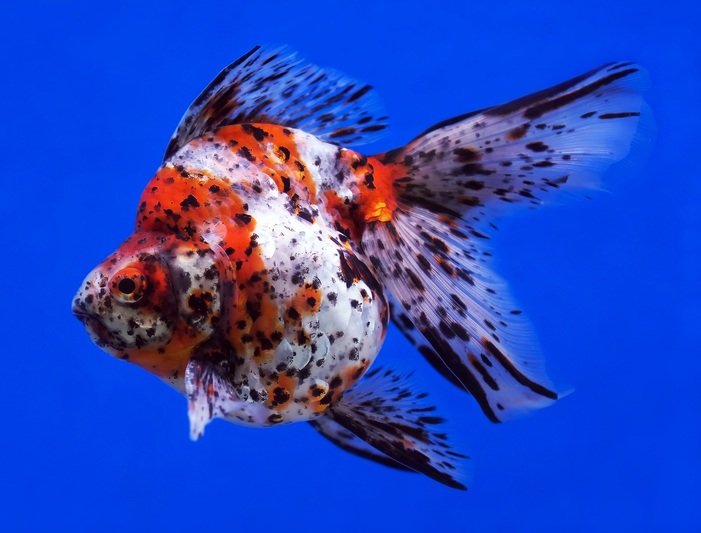| Back to Back Issues Page |
 |
|
The Goldfish Gazette, Issue #077 Breeding Nacreous (Calico) Scaled Fish May 30, 2020 |
Goldfish Care TipsA Free Monthly Resource For Goldfish Enthusiasts In This Issue Goldfish come in three different scale types, metallic, nacreous (calico) and matt. Breeding Nacreous (Calico) Scaled Fish I have had a request to cover breeding nacreous (calico) scaled Goldfish, as breeding and crossing each of the three scale types produces different results, and fry from each type should be raised slightly differently. Scale Type CharacteristicsThe most commonly seen scale type is metallic, followed by calico, and finally the least popular matt.The metallic scale type is so called because these fish have a lot of guanine present, so the fish is highly reflective. These fish are normally a single color such as white, gold, orange or scarlet red. A second color may also be present made up of one of the other colors. Black is a common third color but it is usually the result of injury or the fish still going through its color change. Tri-colored metallic fish are being produced, but the third color is usually black, and it is doubtful it will remain permanently. The matt has no reflective tissue present, not even in the eye orbit which is black. The gill plates are translucent so the gill tissue can be clearly seen. There is little body color, usually there is none making the Goldfish appear whitish/pink. This scale type is the least popular because of the lack of colors. The nacreous (calico) scale group is a hybrid of the first two, showing a mix of translucent and reflective tissue. These fish can have the greatest number of colors, exhibiting reds, oranges, blue, black, white and any variation in between as seen in the image above, a very nice humpbacked Ryukin. Cross Breeding Scale TypesBelow is the table of what the different crosses produce:Metallic x metallic...........All metallic Notice how breeding nacreous to nacreous produces all three scale types. Some of the crosses can be used to improve color such as a metallic/nacreous cross if all your nacreous breeding stock don’t have much color. Raising YoungMetallic fry: From about 50 – 60 days old, depending on temperature, food and sunlight, metallic fry start to change color. The hotter you keep them, the faster they change color. I keep them in the low 80 F range (28-29 C) for the first three months.Common and Comet Goldfish should start to change color very quickly. If any haven’t started changing color after 3 months, they probably won’t and if they finally do, they shouldn’t be considered for breeding. Choose future breeders from those that color the quickest. Fry raised in sunlight develop the deepest color. If raised indoors, instead of going very dark before fading to light gold, some fry will hardly darken at all and seem to just turn pale gold. The metallic fry from a nacreous pairing, or a nacreous/metallic pairing are usually slow coloring, if they color at all. The color change gene seems to be suppressed or non-existent as nacreous fish don’t change color. Telescopic Moors may be an exception to this but I have never bred any. Nacreous Fry: These fry don’t go through a color change so higher temperatures aren’t required when they are young. After about a month, patches of color start to appear on the fry and slowly darken as they get older. They should be raised in the shade or in light green water, as harsh sunlight seems to fade their colors. Blue is a highly desirable color, especially in Shubunkins, but producing a true blue coloration is very difficult. What is usually produced is a dull slate gray. The best nacreous fish have few if any metallic scales, translucent gill plates, and black button eyes. Matt Fry: These fry are raised in the same way as nacreous fry. In a mixed spawn producing two or three scale types, the matt fry will usually be the smallest and weakest. This, and their lack of color make them the least common of the three scale types. It is advisable to separate any matt fry you want to keep from the others until they are bigger.
Comments? Ideas? Feedback? I'd love to hear from you. Just reply to this e-zine and tell me what you think, or what topics you want covered. Next Month's Topic Brine Shrimpwww.facebook.com/aboutgoldfish |
| Back to Back Issues Page |